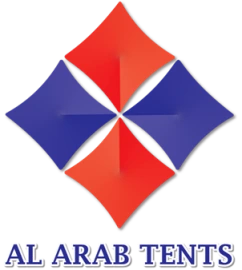33 results for
Tents Manufacturers in UAE - Industry Leading Suppliers UAE

Products & Services :
Tents and Shades, Steel Pergola, Sail Type Shades, Playground Shades, Awning Pergola and Canopies, Canopies, Pergola, School Shades, Tent Manufacturers, Car Park Shades, Arch Design Parking Shades, Pyramid Car Parking Shade, Cone Single Pole Parking Shades, Top Support Parking Shade, Sail Car Parking Shades, Umbrella Car Parking Shades, Wave Design Parking Shades, K Span Car Parking Shade, Bottom Support Parking Shades, Car Parking Shade Fabric, GRP Sheet Car Parking Shades, Frp Sheet Parking Shades, Ptfe Car Park Shades, Roof Canopies, Stadium Shades, School Courtyard, Agriculture Shades, Childrens play area shades, Theme Park Shades, Tensile Shade Solutions, Awnings, Gazebos, Wooden Pergola, Warehouse Shades, Bus Parking Shades, Dome Shades, Polycarbonate Shades, Wedding Tents Rental, Event Furniture Rental, Canopy Tents Rental, Arabic Majlis Rental, Kosha Rental, Marquee Tents Rental, Ramadan Tents Rental, Labour Tents Rental, Arabic Sofa Seating Rental, Event Tent Rental, Banquet Tents, Exhibition Tents, Wedding Tents, Event Management, Swimming Pool Shades, Tensile Fabric Structures, Shades, Awnings Manufacturers, Boundary Wall Shades, Shade Structures, Shade Fabric Repair, Shade Fabric, Car Parks and Sail Shades, Car Parking Shades, Car Park and Shades, Car Park and Sail Shades, Car Shades, Tensile Fabric Structure, Tensile Fabric and Tents, Tensile Membrane Structures, Tensile Shade, Tensile Shade Structures, Custom Made Tensile Fabric Structure, Wooden Pergolas, Parking Shades, Wedding Tent, Tents, Sandwich Panel Shades, Building Maintenance-Repairs and Restoration, Painters and Painting ContractorsRead More...
Products & Services :
Tents Manufacturers, Car Park Shades, Pergola, Steel Fabricators, Tents Renting, Steel Shades, Shades, School Shades, Arabic Tents, Swimming Pool Shades, Sunshade, Boundary Wall Shades, PVC Shadows, Tents And TarpaulinsRead More...
Warehouse No. 5, Behind Maliha Road, Industrial Area 11Sharjah, UAE 46772
06-5528740Call050-8644948Call
06-5528740Call050-8644948Call
Products & Services :
Tents Manufacturers, Car Park Shades, Swimming Pool Shades, School Play Area Shades, Playground Shades, Sail Type Shades, Car Park and Shades, Steel Fabricated Products, Tensile Fabric Structures, Tents And Tarpaulins, Tents Accessories, Tents Portable, Tents Renting, Shade Structures, Car Parking Shades, Chain Link Fencing, Tents, Canopies, Steel Structures, Arabic Tents, School ShadesRead More...W/House 17, Opp Royal Marine Shipping, Kalba Road, Industrial Area 17Sharjah, UAE 24197
06-5541771Call056-1199310Call
06-5541771Call056-1199310Call
Products & Services :
Tents Manufacturers, Car Parking Shades, Shades, Tensile Structures, Tents And Tarpaulins, Mezzanine Floor, Awnings, Car Park and Shades, Canopies, Shade Structures, Car Parks and Sail Shades, Pergola, Car Park Shades, Tents, Steel Structures, Wire MeshRead More...Warehouse 14, Behind Safeer Mall, Near Al Khan R/A, Industrial Area 7Sharjah, UAE 1890
06-5312531Call
06-5312531Call
Products & Services :
Tents Manufacturers, Car Park Shades, Tents And Tarpaulins, Tents, Canopies, Wedding Tents, School Shades, Car Park and Shades, Tents RentingAlbaddad Industrial Complex, Dubai Free Zone, Techno ParkDubai, UAE 56162
04-8029977Call050-6975194Call
04-8029977Call050-6975194Call
Products & Services :
Tents Manufacturers, Tents And Tarpaulins, Tents Portable, Car Park Shades, Curtains, Tents, Tents Renting, Wedding Tent, Swimming Pool Shade, Sunshade, Fire Protection and Fire Fighting Equipment and ServiceRead More...Products & Services :
Tents Manufacturers, School Shades, Aluminium Tents, Sunshade, Tents, Swimming Pool Shades, Steel Structures, Arabic Tents, Tarpaulin, Car Park Shades, Canopies, Tents And Tarpaulins, Car Park and Shades, Steel Fabricated Products, Tensile Fabric Structures, Tents Portable, Tents RentingRead More...Products & Services :
Tents Manufacturers, Tents And Tarpaulins, Tensile Fabric Structures, Car Parking Shades, Awnings and Canopies, Exhibition Tents, Military Tents, Sports Tents, Storage Tents, Warehouse Tents, Labour Tents, Emergency Tents, Furniture Rental, Canopies, Tents, Tents Portable, Tents Renting, Tensile Fabrics and Tents, Tensile Structures, Tensile Shade Structures, Car Park Shades, Arabic Tents, Wedding Tents, Event Tents, Funeral Tents, Majlis TentsRead More...Flat # 110, 1st floor, Al Faisal 2 Bldg, Al Qasimya, King Faisal StSharjah, UAE 1890
06-5317779Call050-4616779Call
06-5317779Call050-4616779Call
Products & Services :
Tents Manufacturers, Tents And Tarpaulins, Car Park Shades, Awnings And CanopiesProducts & Services :
Tents ManufacturersProducts & Services :
Tents ManufacturersProducts & Services :
Tents ManufacturersProducts & Services :
Tents Manufacturers, Awnings and Canopies, Canopies, Car Park and Shades, Tents And Tarpaulins, Tents Portable, Tents RentingProducts & Services :
Tents Manufacturers, Powder Coating, Stainless Steel, Tents And Tarpaulins, Fencing, Shades, Shades Suppliers, Steel Fabrication, Awnings and Canopies, Car Park Shades, Pool Shades, Car Park and Shades, Fencing SuppliersRead More...Products & Services :
Tents Manufacturers, Aluminium Windows, UPVC Doors and Windows, Curtain Walls, Cladding, Mild Steel Fabrication, Car Park Shades, Automatic Sliding Doors, Shower Doors, Office Glass Partitions, Gypsum Board Partitions, Painting Contractors, Aluminium Doors, Aluminium Fabricators, Glass Works, Handrails, Kitchen Cabinets, Aluminium and Glass WorksRead More...Products & Services :
Tents Manufacturers, Pool Shades, Pergola, Tents, Car Parking Shades, Tensile Fabric Structure, Awnings and Canopies, Ramadan Tent, School Shades, Rental Tents, Tents And Tarpaulins, Tents Portable, Tents RentingRead More...Top Tents Manufacturers Suppliers in UAE
- Al Muzalaat Building Maintenance LLC, Ajman, Contact: 050-5773027
- Usman Ali Tents, Abu Dhabi, Contact: 050-4127282
- Ardh Al Arab Tents and Sheds Fix LLC, Sharjah, Contact: 06-5528740
- Al Amani Speciality Structures LLC, Sharjah, Contact: 06-5541771
- Al Aydi Tents and Metal Ind, Sharjah, Contact: 06-5312531
- Al Baddad International, Dubai, Contact: 04-8029977
- Al Daiem Tents Industries LLC, Sharjah, Contact: 06-5663452
- Al Fares International Tents, Sharjah, Contact: 06-5563444
- Al Hattan Tents & Shades LLC, Sharjah, Contact: 06-5317779
- Al Khaimah Al Malakiah Tents Ind. LLC, Sharjah, Contact: 055-7772594
About Tents Manufacturers
Tents manufacturers in UAE offer wide range of tents for camping, hiking, backpacking, troops or for everyday use. Tents used for camping can be differentiated based on their utility and size, such as 1 person tent, 2 person tent, 3 person tent or 4 person tent. A three season tent is designed to accommodate campers in spring, summer and fall. It usually has two entrances for better ventilation. A four season or all-season tent, is suitable for year round camping. It also provides protection in bitter cold temperatures. The price of tents varies depending on the size, features and brand. Most tents can be purchased at prices ranging from mid to higher-end.







